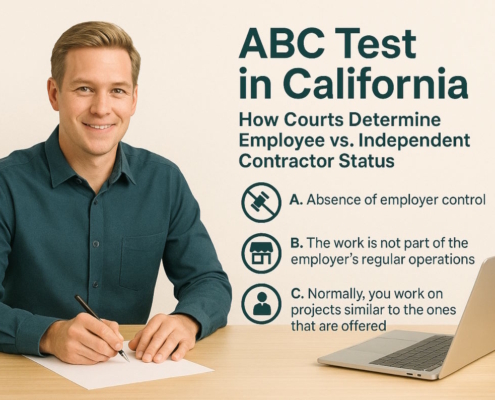What does leadership in HR look like?
If you want to be a great HR leader, being an expert in HR isn’t enough. It means working with the company as a partner and advisor and making a difference through HR strategies. Furthermore, it shows that you can lead others in a manner that inspires others to follow you. How do you become a leader in human resources? Let’s take a look at the basics.
How can one be an effective leader in human resources?
It takes a lot of different skills to be a good leader, but we’ll use our HR-specific examples to show what it means.
Here are a few examples of effective leadership in the HR field:
1. Thinking about HR in terms of business
To be an effective HR leader, you need to know what drives your company’s strategy and objectives, and how HR practices and their results affect them. They reach out to various teams to learn about their needs and are interested in learning about the roles played by each department.
The consequences and impact of HR can be better understood by HR leaders who take the time to learn about the company’s revenue generation and the various difficulties it encounters. Thanks to their business savvy, they are able to engage in meaningful talks with leaders at their level. In this way, they are able to address the issues confronting the company and provide practical answers.
2. Excellent planning abilities
In order to be successful, HR leaders need to be able to see forward and see how their initiatives will fit into the bigger picture of the company’s objectives. In order to help the organization reach its objectives, they are able to transform the current business climate and the changing nature of work into both immediate and distant plans.
When discussing operational matters, they steer the rest of the leadership. Consider scenario planning for the type of talent that will be required to lead the company to its desired destination. Essentially, strategic HR executives strengthen and highlight the vital role of HR in the organization’s success.
3. Ability to solve problems
A large portion of human resources entails problem-solving, with decisions having far-reaching consequences for many individuals.
A good HR leader takes note of details, looks at the larger picture in every difficult situation, and gives serious thought to all of the possible outcomes. Instead of making assumptions, they probe for more information to find out what’s really going on. Additionally, HR executives employ critical thinking skills to spot trends and anticipate danger.
In a short amount of time, they can assess the available resources and determine the most rational way to use them. However, when devising remedies and preventative measures, they consider stakeholder, organizational, and political contexts.
4. Being someone people trust
Human resources managers primarily serve as advisors to upper-level executives and other managers. They need to be able to connect with them on a personal level and earn their trust.
They do this by working together, speaking their language, and being able to show how their choices and actions affect the business.
After the HR manager gains everyone’s confidence, their recommendations will be seriously considered. That gives them a lot of sway in the company.
5. Promoting a positive work environment
When it comes to building a strong company culture, human resources plays a key role. The best human resources managers are cultural stewards, working to spread the company’s ideals and motivate employees to join them.
Keeping your word, being accountable for your actions, driving change, and committing fully to DEIB are all part of this.
6. Being proactive and focused on achieving results
Good human resources managers have attainable objectives and a plan to reach them. Because of this, they are able to work with laser-like concentration and absolute conviction, achieving their goals.
They are also fearless when it comes to speaking their minds and solving difficulties in a rational way. When it comes to leading projects, they aren’t afraid to be proactive.
7. Assisting workers in reaching their goals
The ability to advocate for employees while also balancing the organization’s interests is a hallmark of an effective HR executive.
Workers are not seen as an issue that needs fixing. They are more than willing to provide a hand and provide encouragement instead. They promote internal recruiting and advancement prospects and place an emphasis on staff learning and development opportunities.
8. Empathy as a leadership tool
Leaders in human resources who are empathetic and patient are able to foster an atmosphere free of criticism and hostility. They are open-minded and considerate, showing interest in individuals and their points of view. As a result, staff view HR as approachable.
In this setting, individuals are more likely to feel comfortable expressing themselves, even when doing so involves discussing delicate topics.
In human resources, what kinds of leadership abilities are crucial?
Standing out as an exceptional leader requires a diverse set of skills and abilities across all domains in which an HR professional operates.
With a few examples to illustrate each, here is a breakdown of three types of leadership competencies:
1. In charge of the company
The highest level of company decision-making should involve HR. Therefore, HR managers need to possess the following essential leadership traits to keep up with the other executives:
Making choices: Leaders’ job is to make decisions, and they need to be good at it. Powerful leaders base their decisions on evidence and sound reasoning. They have good judgment and know when to ask for help before moving further. Human Resources must take into account the reality that the majority of corporate actions will have an impact on personnel.
Managing change: In an ever-changing business environment, survival and success depend on the ability to adjust to new circumstances. Managers in charge of human resources should be adaptable enough to anticipate and welcome change. They should also be a steady hand that helps staff adjust to new circumstances.
2. Encouraging Others
A leader is only effective if they can inspire others to follow in their footsteps. A company’s success is directly proportional to the degree to which its employees are well-guided. To effectively lead people, you must possess these abilities:
Interpersonal skills: Being able to connect with others and express yourself clearly allows you to gain their respect and friendship. Because dealing with people is at the core of your role as an HR leader, this is of utmost importance. Differentiating characteristics of effective leaders include high levels of emotional intelligence, empathy, honesty, clarity of expression in speech, the ability to provide and receive constructive criticism, and attentive listening.
Ability to coach: A coach is a leader who, by providing guidance and positive reinforcement, helps their team members reach their full potential. Human resources managers need strong coaching skills because their job is to identify and cultivate the company’s talent. Supervisors are responsible for encouraging workers to improve their skills and performance, providing them with helpful criticism, and assisting them in determining their role in the company.
3. Taking charge of your own journey
Your peers and subordinates will doubt your leadership abilities if you can’t even lead yourself. By consistently demonstrating excellent behavior, habits, and expertise, a great leader gains the respect and trust of those around them.
Self-management: Everyone handles themselves and daily tasks in their own unique way, but there are some traits that show you are good at self-management. You may show that you are reliable and responsible by keeping your emotions in check, always being ready and organized, and finding a good work-life balance. Effective self-managers in human resources set the stage for a safe and productive workplace.
Self-improvement: People who are self-aware understand that they aren’t perfect and that there is always room for improvement in their abilities. The best leaders are those who are always looking for new ways to learn and grow, even if it means stepping outside their comfort zones. This kind of HR leader shows what the education and training program at their company is all about.
What steps can you take to become an effective HR leader?
No matter your career aspirations—be it becoming an HR leader or simply wanting to grow as a leader in your current position—there are steps you can take to succeed.
Here are seven suggestions:
- Get to know the company, its structure, and the HR model.
You can better lead your business if you have a thorough understanding of it. Get to know your company’s products and services as well as the industry by interacting with individuals from various departments. After that, you’ll be able to establish yourself as an invaluable asset to the company by tailoring HR services to meet individual requirements.
Get to know the ins and outs of the company’s structure and design. Learn the ins and outs of the systems, roles, and processes to make HR programs (including recruitment and performance management) meet your needs.
Another thing you should do is familiarize yourself with various HR operating models and see how they apply to your company. With your newfound understanding of the company, you can determine which model best organizes service delivery to maximize value.
- Establish trust and credibility.
People are more likely to follow your lead when they trust you. Keep it real. Connect with people on a deeper level by honing your stakeholder management skills. Work on your ability to manage expectations, as well as your communication and interpersonal abilities.
Building trust with external stakeholders, including senior executives, employees, managers, HR, and technology vendors and consultants, should be your top priority. When you’re on the job, people should be able to tell that your words and actions are consistent. Because of this and your obvious competence, people will respect and admire you.
- Show the way
Establishing credibility and trust requires setting a good example for other people to follow. Reinforcing a culture of mutual respect and teamwork is as simple as setting a good example and performing your own work.
To set a good example, consider the following:
- To establish reasonable norms and standards, it is important to educate oneself on HR ethics.
- Keep the promises you’ve made.
- Always confront and settle disagreements.
- Take criticism well and grow from your failures.
- Work and interactions should reflect the organization’s ideals.
- Exhibit inclusive actions like being an ally, actively listening, and not making assumptions.
- Prioritize your health and get a good night’s sleep.
- Master the art of managing change
Inevitably, change is one of the most difficult things for companies to deal with. Nowadays, businesses are changing at a rapid rate. To keep up, you need to master the art of leading and supporting organizational change.
When faced with challenges or new opportunities, having a firm knowledge of the systematic approach to change management can equip you to rise to the challenge. Here is your chance to make a splash. You will distinguish yourself as a leader by being steady and making decisions after careful consideration when faced with change.
- Implement a team-based and adaptive human resources strategy
A leader in human resources must not get stuck in the past. To be successful in today’s business environment, you must be well-versed in the most recent HR strategies that encourage creativity and flexibility.
Acquire knowledge in HR project management, agile and lean HR, and related concepts. That way, you can plan an HR department that can adapt to the changing needs of your company in the face of a dynamic business and labor market.
- Establish personal objectives
Managing one’s own life is an important part of being a leader, as we’ve already established. For that reason, you should establish objectives for your professional growth in addition to those for the Human Resources department. You can better focus your efforts and measure your progress toward your objectives when you establish targets.
Setting goals in and of themselves might help you figure out what kind of leader you want to be. The first question you should ask is, “What is it that I want to learn?” “What are my professional goals?”
You should consider making SMART objectives for yourself. For instance, “I will find a wise person who is prepared to invest in my professional development and share their knowledge with me within the next two weeks so that I may build a mentor relationship.”
- Obtain certification.
A certification gives you access to a useful information and skill set, but it does more. Your dedication to your career and the HR industry is evident in your willingness to participate in a leadership development program. When seeking leadership positions, this distinction might set you apart from the competition.
In sum
It takes dedication and hard work to become an excellent HR leader. It’s not only about honing your abilities. You should also work on building trust and relationships both inside and outside the company.
The key to a successful business and satisfied workers is strong leadership. Whatever the future brings, your role as an advisor to your business will be crucial in guiding it.































